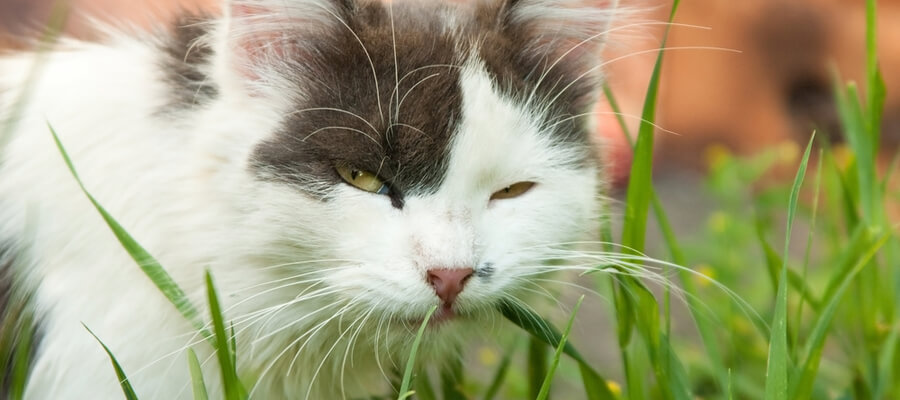Cats eat grass. It’s a known fact. And if you are a pet parent to a frisky feline, you’ve probably wondered why bother buying organic or premium cat food if they’re going to turn and eat the grass you mowed yesterday. Okay, most of us don’t buy the gourmet stuff, but even well rounded diet from a reputable company will put a small dent in most budgets.
Why do cat’s eat grass if they have tasty kibble, canned wet food, or even homemade cat food in the house? We’ll go over the three most common theories of why cats each grass.
Basic Instinct
A group of scientists reported their findings of research done on chimps and other wild animals that ate grass to expel parasites out of their intestines and other parts of their digestive system. It’s theorized that cats eat grass out of evolutionary need. Once upon a time when cats were just as wild as chimps, they ate grass for the same reason. Most cats don’t need to anymore due to their regulated diet from their humans, gourmet or not.
Natural Laxative
Cats don’t have the right enzymes in their stomachs to digest grass and other vegetation. Instead, grass will stimulate the stomach and intestinal muscles to move the unwanted blades of grass, and other non-digestible matter, thus causing your feline to throw-up after chowing down on the green vegetation.
It’s believed for a long time that cats eat grass to help with clear only items that they have ingested but can’t break down in their stomach. This includes bird feathers, bones, cat hair, or any other material that is bothering their stomach.
There is also another possibility that when cats eat grass, it adds fiber to help pass worms that may be in their intestinal tracks. Again, another method of cleaning out their digestive system.
Like Momma’s Milk
Grass contains folic acid, the same as what is in their momma’s milk. This vitamin is an essential part for producing hemoglobin, a protein that helps a cat’s blood carry oxygen throughout its body. When that milk is no longer available, a cat instinctively knows where else they can get folic acid when their body needs it.
What Can You Do to Keep Your Cat Safe?
- Grow a patch of grass in your home for your cat. That way you know it’s not covered in dangerous fertilizers or wild animal droppings that could be infected.
- Growing a small amount of catnip is another option for your cat. Not only will your kitty possibly do some “America’s Funniest Home Videos” worthy behavior, but they’ll also satisfy their need for the green munchies.
- Make sure all of the plants in your home are not poisonous to your pet. You can check out our guide When Pets and Plants Don’t Mix.

- If you do let your cat outside, make sure to use a pet-friendly fertilizer and weed control spray.
- Keep your kitty’s vaccinations up-to-date. If your fur-baby comes in contact with an infected or sick wild animal (think bat, mice, birds), you’ll want them protected as much as possible.
While finding the remnants of your kitty’s grass-nibbling snacks are less than pleasant, it’s worth noting that they were trying to get some extra fiber, folic acid, or relieving an upset stomach. It’s is worth mentioning that if your cat is displaying any other odd behaviors other than throwing up, contact your veterinarian right way to schedule an examination.
